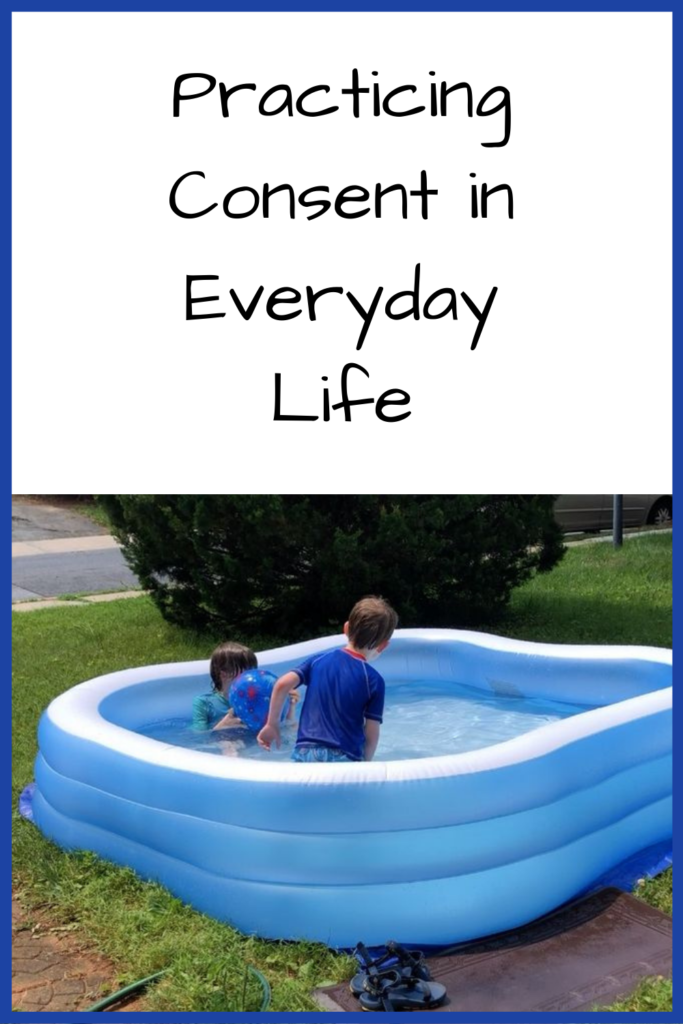
“Did you ask if you could splash him? You need to ask first,” I insisted.
“Do you want to be splashed?” my older son – who is seven – asked my younger son, who is four.
“Yes!” my younger son responded, with an enthusiasm I certainly wouldn’t have about getting smacked in the face with water.
“Well, as long as he’s okay with it,” I said. After a second, I added, “And you’re not hurting each other.”
This is a conversation we have almost daily in our household. If it’s not splashing in our tiny blow-up pool, it’s wrestling on the couch. Or sitting on each other on the bed. Or grabbing each other’s faces. With two high-energy kids, one of which is very sensory-seeking, there’s a whole lot of physical contact going on in our household.
Which means there are a whole lot of conversations about consent. As I know both kids genuinely like splashing, wrestling, and cuddling, I don’t want to forbid them from doing them. But they also have to respect each other’s wishes and needs. From asking beforehand to reading verbal and physical cues, that takes practice – lots and lots of practice. Besides the communication piece, the self-control to stop an action quickly requires practice as well, especially for kids their age.
Thankfully, that practice will serve them well as adults. Giving and receiving consent needs to be part of everyday life far before people deal with it in a sexual context. It ranges from being able to judge how physically close you should be to another kid (especially right now!) to being able to tell an adult that you’re uncomfortable with what they are doing. With practice in lots of different situations, clearly giving and receiving consent should become second nature.
In the meantime, we’ll keep having a lot of conversations. Even when it sometimes involves me getting splashed.
Pingback: Fighting Against Toxic Masculinity in Raising Boys - We'll Eat You Up - We Love You So